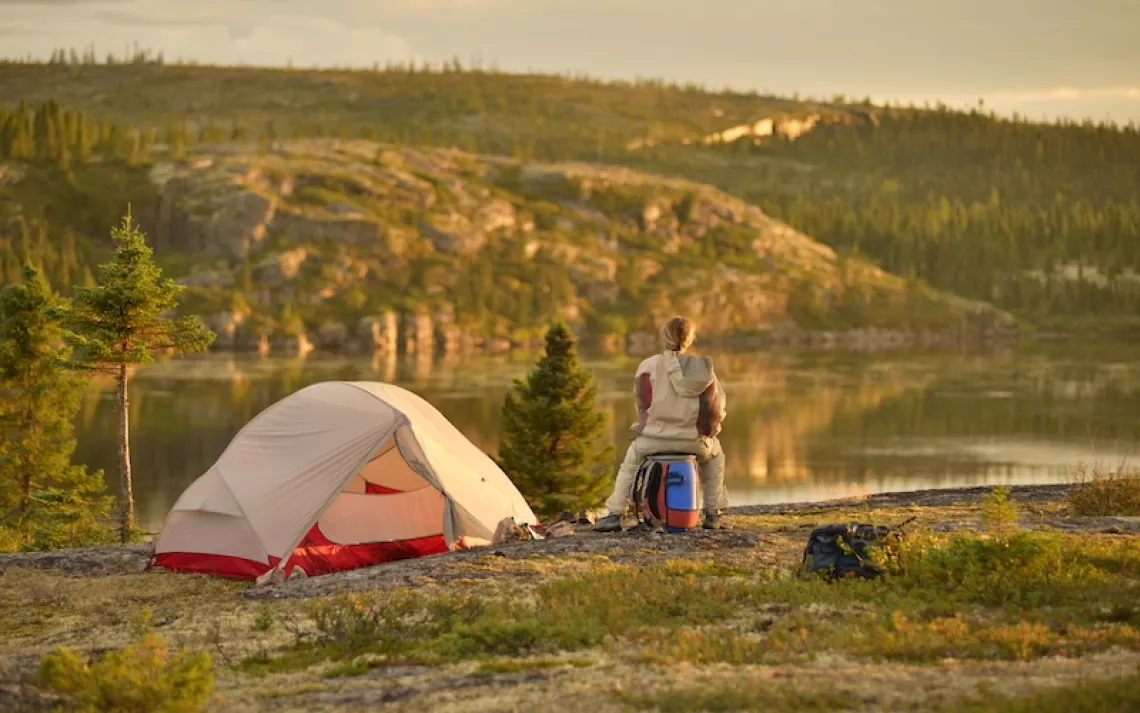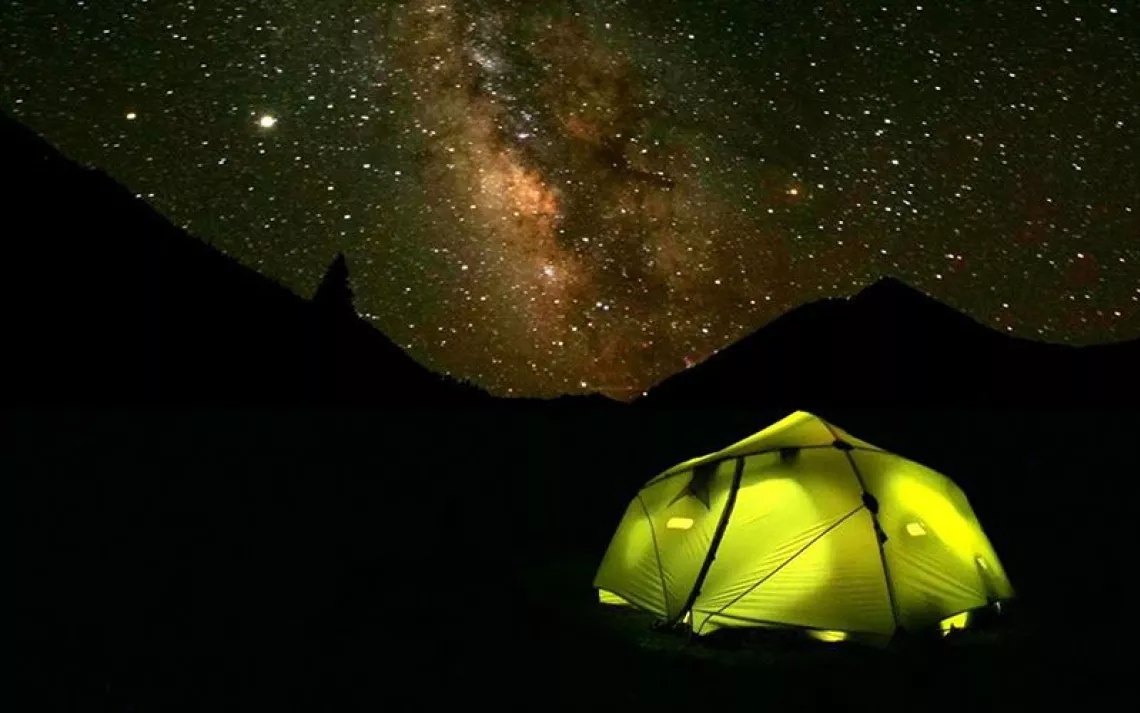A DIY Guide to Micro-Adventures
The joys of thinking small in the outdoors
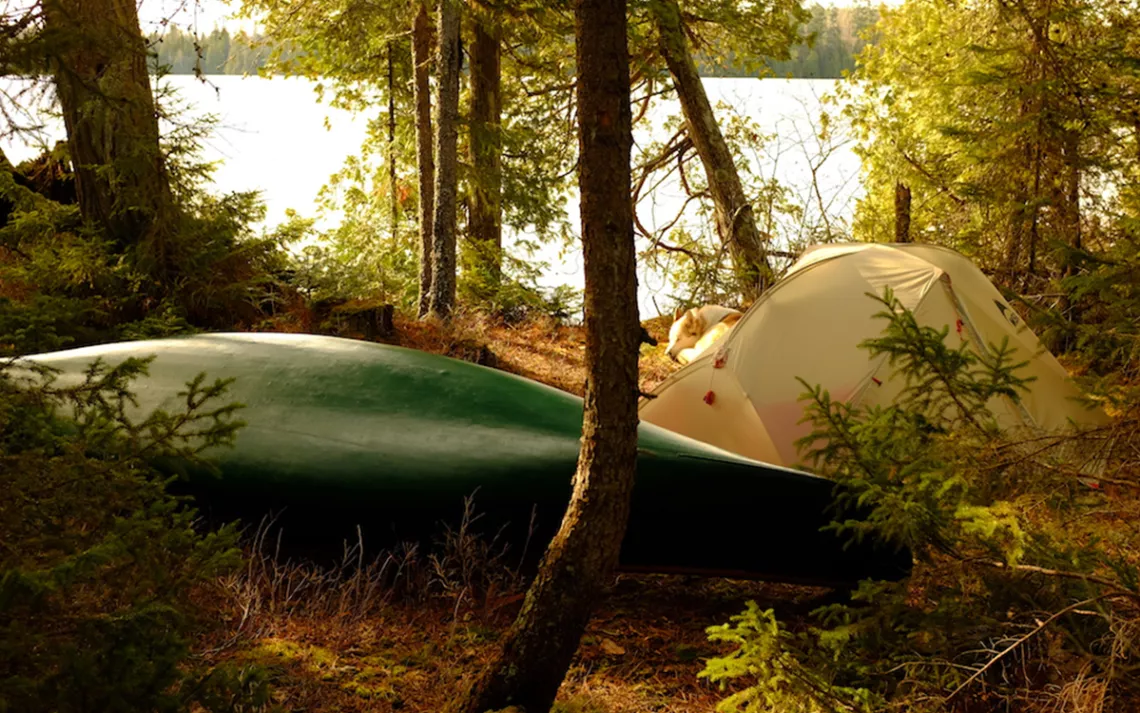
Warm May sunshine foretells summer’s approach, even though the ice only departed this Canadian lake barely a week ago. It’s around noon when I lift my canoe ashore, recline on a slab of granite and indulge in gazing at the clouds. I realize I haven’t enjoyed this pleasure in years and decide to see what it’s like with binoculars. Magnified, puffball cumulus are suddenly pinpricked with black specks, like fleas on a white dog. Looking closer, I realize I’m seeing streamers of migrating sandhill cranes, moving in skeins of stylized Vs beyond the grasp of my naked eyes. I grin at the luxury of having the leisure to notice, my payoff for choosing to load my canoe with overnight gear and venturing off on a brief escape. It would’ve been so easy to stay home. But that’s behind me now. I’m excited for what I’ll see next.
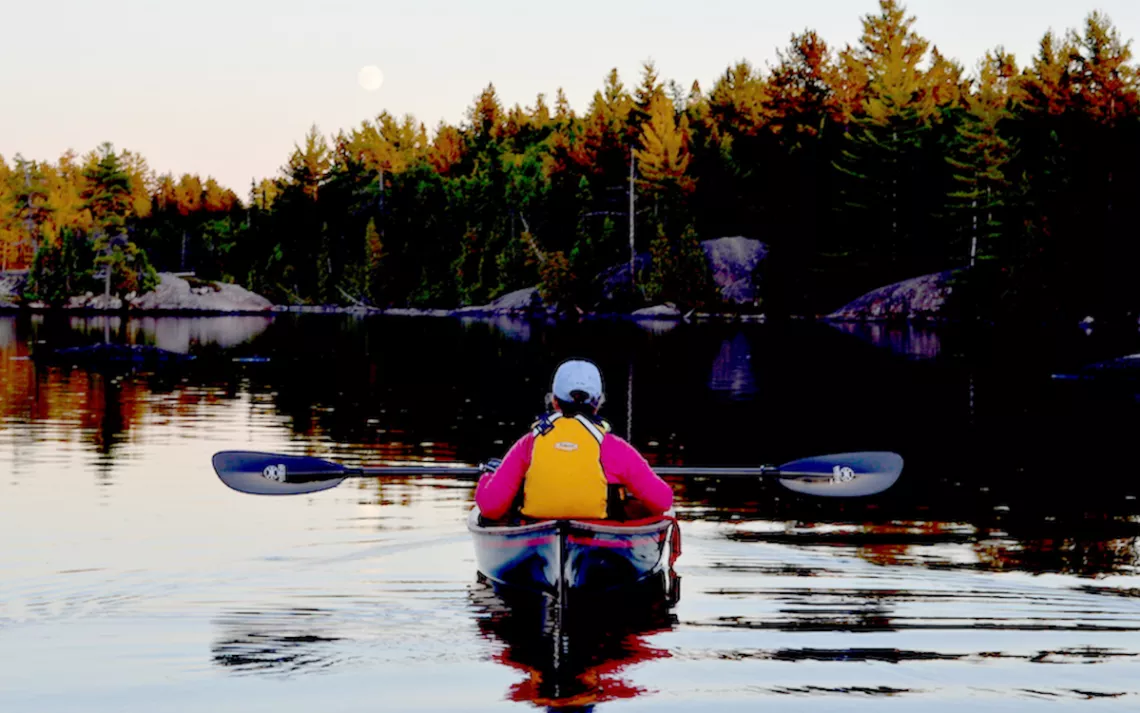
One of the greatest downsides of a hectic life is the way it can sap one’s motivation to get out on a quick camping trip. For longer trips, I make a huge effort and make compromises in my life to prioritize canoe expeditions spanning a month or more each summer. Ironically, it’s much tougher to find reasons to get out on a weekend or slip out for a midweek night under the stars. That’s a shame, because I’m lucky to have easy access to natural spaces within a short drive—or even bike ride—from my house. I feel guilty for taking that blessing for granted.
It was different back when the COVID pandemic hit. Then, the urgency to escape and seek solace in nature—even for a single night—kicked me out of my inertia. Since then, I’ve made a point of camping out at least once per month. Norwegian nature writer Torbjørn Ekelund had a similar experience. He was saddled with parenting and work responsibilities, and A Year in the Woods (published in English in 2021) describes Ekelund's nagging awareness of losing touch with the seasons. So he resolved to do a “micro-expedition” one night per month over the course of a year, hiking into the Scandinavian woods and camping out. British writer Alistair Humphreys had the same notion of “micro-adventure,” which he describes as any outing “that is short, simple, local, and cheap—yet still fun, exciting, challenging, refreshing, and rewarding.”
Like the experience of so many first-time campers, Ekelund’s inaugural mini-expedition nearly came to an unceremonious end with a long, cold, miserably sleepless night in the depths of January. But his discomfort was temporary. By the time he set out for the second month of his project, Ekelund had made a few key improvements to his kit to allow him to sleep warmly through the night. Over the course of the rest of the year, he revels in close encounters with moose, witnesses the arrival of spring birds, fly-fishes for trout, gushes about simple meals, and does plenty of reading on tent-bound nights. Ekelund also ponders the fallacy of multitasking, considers the work of various nature writers, and discovers joy in his own company—and, on one glorious August outing, that of his four-year-old son—in completing his year-long challenge.
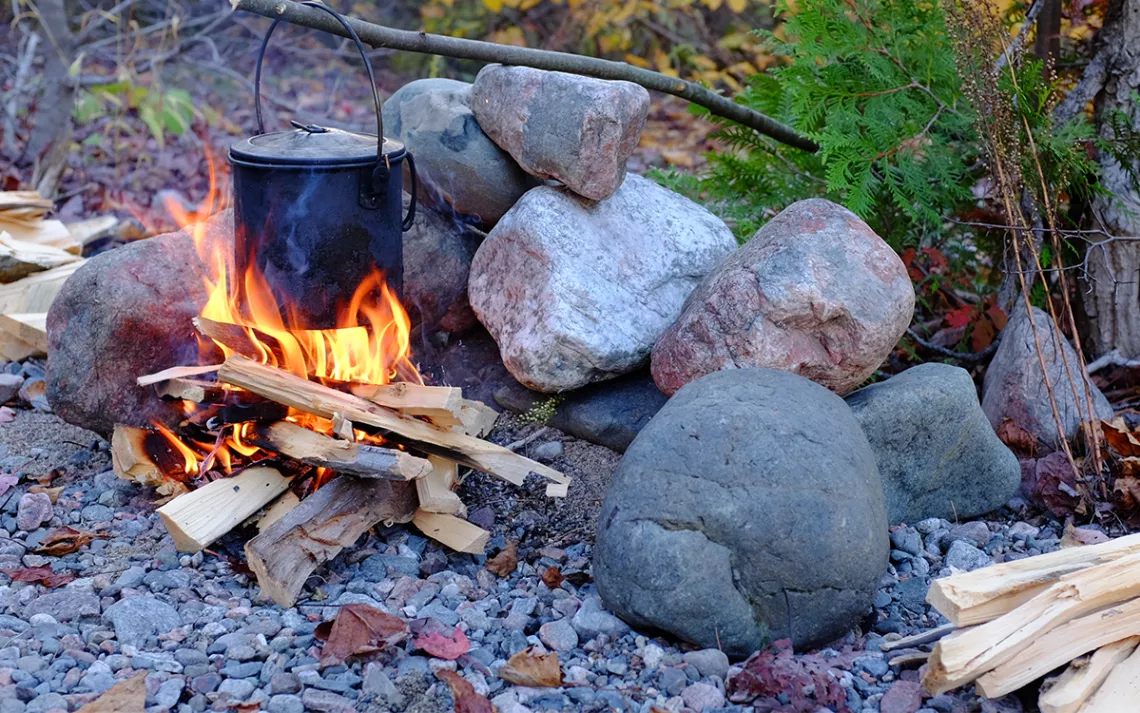
You can easily join the vacation-a-month-club. Granted, you need to acquire, organize, and pack pretty much all the same outdoor equipment whether you’re going camping for a night or month. But the rewards are high—and they’ll most likely ignite a desire for more. Here are some practical and gear-related tips to ease your escape.
Where to go? Except in the off-season, those iconic national parks are the last place to consider for a quick overnight camping trip. Instead, sleuth out “slack-country” options around your hometown. Most North Americans can only feel envy for the world-class, public-access wilderness that Ekelund is able to frequent on Oslo’s doorstep. As a Canadian, I’m grateful for the opportunity to explore and paddle the abundant public lands, rivers, and lakes that surround my hometown. If you’re not so lucky, research lesser-known state parks and forest service lands, or look for easy camping options near access points on established backpacking trails, such as the North Country Trail in the Midwest or California’s Pacific Crest Trail.
Think like a prepper. Zombie apocalypse aside, keeping a bin of camping gear that’s ready to toss into a backpack, kayak, or canoe makes the task far less onerous. That bin should include a tent, hiking boots, camp clothing, cooking equipment, and first aid supplies. About the only items you shouldn’t pre-pack include your sleeping bag, which should be stored loose to retain its warmth, and perishable foods.
Plan simple meals. Coming up with a menu for a spontaneous overnight camp-out is easy and cheaper than you think. Forget the freeze-dried camping fare, which is expensive and usually underwhelming. Your own kitchen pantry likely has the makings for simple and nutritious camping meals. My staples include rolled oats, dried fruit, quick-cooking legumes like red lentils, ramen noodles, bouillon cubes, and crackers. Add some cheese, a few fresh veggies, dry-cured meat (if you must), coffee, and chocolate, and you’re ready to go.
I appreciate Ekelund’s lofty praise for his well-worn camping cookware for one-pot meals. I also align with his preference of cooking over a small fire or twig stove like the Solo Stove Lite ($90, solostove.com)—but only in locations where it is permitted.
Sleep warm. A quality sleeping bag is your gateway to serious, pleasurable backcountry camping. At the very least, choose a high-quality, lightweight bag like the Exped Ultra 0 ($500, exped.com), a lifetime purchase that promises a warm sleep to the freezing point, packs the size of a one-liter water bottle, and comes with Responsible Down Standard–certified insulation. A quality sleeping pad like the Thermarest NeoAir Xtherm ($240, thermarest.com) offers enough insulation for year-round use and smooths out the lumpiest ground.
Stay dry. Ekelund maintains that his favorite piece of gear is a basic nylon tarp, which he uses as a standalone shelter in benign conditions and pitches overtop his tent in the rain. Tarps are supremely versatile and yet another example of “you get what you pay for.” Small-scale manufacturers like Minnesota’s Cookes Custom Sewing craft immaculate protection from the elements in gossamer-thin silicone nylon. Its 8-by-10-foot model ($180, cookescustomsewing.com) will fit in your pocket.
Find a hobby. A newfound love of birding has been one of my greatest motivators to seize every opportunity for an overnight trip: More time in nature means more time to hear and see birds. Just as Ekelund discovered, this makes me feel like I’m taking part in the change of seasons. Any activity that keeps you busy will make you feel more comfortable in the outdoors; birds offer excellent companionship when I’m camping solo throughout the year.
 The Magazine of The Sierra Club
The Magazine of The Sierra Club


